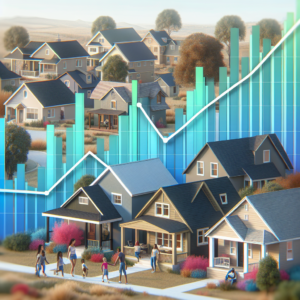
As we navigate through 2023, the commercial real estate (CRE) sector presents a complex tapestry of opportunities and challenges for investors. With the lingering effects of the pandemic, shifting consumer behaviors, and evolving economic conditions, understanding the current landscape is crucial for making informed investment decisions. This article delves into the intricacies of commercial real estate in 2023, highlighting key market trends, potential risks, and strategies for maximizing returns.
Understanding the Landscape of Commercial Real Estate in 2023: An Overview
The commercial real estate market in 2023 is characterized by a dynamic interplay of recovery and transformation. Following the disruptions caused by the COVID-19 pandemic, sectors such as retail and office spaces are undergoing significant changes, while logistics and industrial properties continue to thrive. The rise of remote work has prompted companies to reevaluate their office needs, leading to a surge in demand for flexible workspaces. Additionally, the e-commerce boom has fueled growth in warehousing and distribution centers. Investors must navigate this evolving landscape, recognizing that adaptability and foresight are essential for success in the current market.
Key Factors Influencing Market Trends and Investment Opportunities This Year
Several key factors are shaping the commercial real estate market in 2023. Firstly, interest rates remain a critical concern, as the Federal Reserve’s monetary policy continues to influence borrowing costs. Higher rates can dampen investment activity, particularly in sectors reliant on debt financing. Secondly, demographic shifts, including urbanization and changing consumer preferences, are driving demand for mixed-use developments and experiential retail spaces. Furthermore, sustainability and environmental considerations are becoming increasingly important, with investors seeking properties that meet green building standards. Understanding these factors is vital for identifying lucrative investment opportunities in the current climate.
Identifying Hidden Risks in Commercial Real Estate: What Investors Must Know
While the potential for high returns in commercial real estate is enticing, investors must be vigilant about the hidden risks that can undermine their investments. One significant risk is the potential for market volatility, particularly in sectors that are still recovering from the pandemic. Additionally, the rise of remote work has led to increased vacancy rates in traditional office spaces, which could impact rental income. Investors should also be aware of regulatory changes, such as zoning laws and environmental regulations, that may affect property values and development potential. Conducting thorough due diligence and market analysis is essential to uncover these risks before committing capital.
Evaluating the Rewards: Potential Returns and Growth in 2023 Investments
Despite the inherent risks, the rewards in commercial real estate can be substantial for those who approach the market strategically. In 2023, sectors such as industrial and multifamily housing are projected to offer robust returns, driven by continued demand and limited supply. Additionally, properties that incorporate modern amenities and sustainable features are likely to attract higher-quality tenants and command premium rents. Investors who focus on value-add opportunities, such as renovating older properties or repositioning assets in emerging markets, can also realize significant appreciation in property values. A well-researched investment strategy can yield impressive returns in the current landscape.
Strategies for Mitigating Risks in Commercial Real Estate Transactions
To navigate the complexities of commercial real estate investments, investors should implement robust risk mitigation strategies. Diversification is key; by spreading investments across different property types and geographic locations, investors can reduce their exposure to market fluctuations. Conducting thorough due diligence, including comprehensive financial analysis and property inspections, is essential to identify potential issues before acquisition. Additionally, establishing strong relationships with experienced local brokers and property managers can provide valuable insights into market conditions and tenant dynamics. Finally, considering alternative financing options, such as partnerships or joint ventures, can help distribute risk while enhancing investment potential.
The Future of Commercial Real Estate: Predictions and Insights for Investors
Looking ahead, the future of commercial real estate is poised for continued evolution. As technology continues to reshape the way we live and work, investors should anticipate further shifts in demand for various property types. The integration of smart building technologies and the emphasis on sustainability will likely drive investment decisions in the coming years. Additionally, as remote work becomes more entrenched, adaptive reuse of existing properties may emerge as a viable strategy for maximizing value. Investors who remain agile and informed about market trends will be well-positioned to capitalize on emerging opportunities and navigate potential challenges in the evolving commercial real estate landscape.
In conclusion, the commercial real estate market in 2023 offers a blend of risks and rewards that require careful consideration and strategic planning. By understanding the current landscape, recognizing key influencing factors, and implementing effective risk mitigation strategies, investors can position themselves for success in this dynamic sector. As the market continues to evolve, staying informed and adaptable will be essential for navigating the complexities of commercial real estate and achieving long-term investment goals.



























